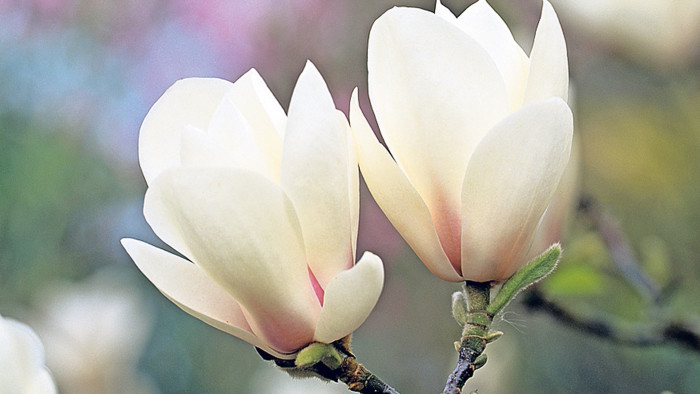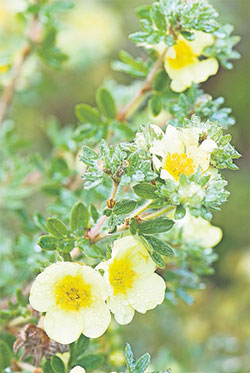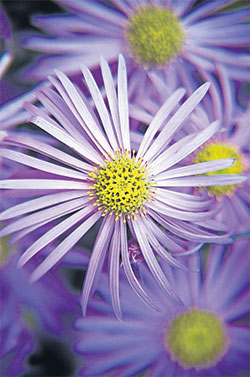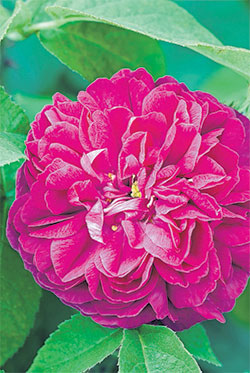Garden plans for the year – and bright ideas for a walled area

Simply sign up to the Life & Arts myFT Digest -- delivered directly to your inbox.
Gardening is back with a rush, as everything in British gardens is already ahead of itself. I am in the happy position of having cleared a smallish walled area which now needs to be planned and planted. It cannot be labour-intensive, but it also cannot be dull. What should I choose and why? The suggestions may provoke you into action too.
I am certainly not going to install decking. It is the non-gardener’s first resort. It eliminates most of the ground which could be planted and in a country without termites to eat it, it looks terribly dull. Nor am I going to install “design solutions”, no stumpery, statuary or animal sculptures in brown wire. The site is walled and the plants can do the work. I want a green oasis which has high points throughout most of the year.
The flower beds will mostly run round the perimeter and there will be no fancy shapes. The human hand will not be too obtrusive. There is no question of making a sanctuary for wildlife. It will be inviting to butterflies, but not to squirrels and rats. The walls and urban surrounds make it a rabbit-proof zone.

The lowest of the walls can accommodate a tree which will rise above it. As usual, I have ordered a winter-flowering cherry, still my first choice for a long flowering season. This year, Prunus subhirtella Autumnalis has been magnificent, hardly troubled by any frost. The flowers have gone on for nearly four months. Eventually it may spread sideways over the adjoining pavement, but if the lower branches are trimmed, the upper canopy will be a pleasure, not a hazard. In the bed beneath it I will act on my recent advice and plant other winter-flowering shrubs, especially mahonias and low-growing sarcococcas. I will include one of the Mexican mahonias, probably pallida as it is not yet well known. The sarcococca will be confusa, the one with glossy evergreen leaves and stunningly sweet-scented little flowers. It can be clipped very well into a low hedge about 2ft high to define the edge of the flower bed. If you believe that warmer winters are now a fact of British life, you need to double up on winter-flowering plants; they extend the flowery season by another three months. Many of them, like my choices, are evergreen, so they look neat all year round. Remember that the mahonias can be pruned back hard after flowering to stop them becoming top-heavy. They can be cut right back into old wood.

Below the opposite high wall I will have a bush of the scented Daphne bholua Jacqueline Postill, which I described last week. I am planning to plant the brilliant red-flowered Schizostylis coccinea in front of it, another season-extending winner as it looks so good from October on into a modern mild November. Books used to claim that it had to have damp soil. This year, that need has been easily met, but it is not really a need at all. Schizostylis compete well with other plants and roots and can be divided to make dozens more plants each spring. There are many named forms, but I especially like a big-flowered one called Red Dragon.
In spring there has to be a magnolia. If I plant one as a freestanding central specimen, it will be Magnolia x loebneri Merrill because it flowers so abundantly at an early age when it is still only 3ft or 4ft high. It is the ideal shrub for the restless and the impatient. At present, however, I am thinking of a magnolia against the main high wall as a freestanding wall shrub. I want Magnolia Manchu Fan because its flowers are shaped like white Chinese fans and stand out well against the bare branches. Watch out for it because the magnolia season is now almost upon us. Manchu Fan is no longer a scarce plant, but owners of new front gardens do not make enough of it.
I certainly want good peonies. The choice is ever greater and I think I will have three groups of different varieties, my beloved Kelway’s Glorious to the fore. If you can find it, the red-flowered Paeonia L’Éclatante is a great contrast, not least because it is late flowering. The flowers are held on solid stems too. The third in the group will be one of the recently available Tree Peonies from Asia, perhaps the semi-double, white flowered Paeonia suffruticosa Hakuo-jisi. I prefer the semi-doubles to the full doubles as more of the ruffled petals can be seen. The finely cut leaves on these tree varieties are pretty for most of the summer, but I will extend the flowering season in two ways. Between and behind the border peonies I will plant tall later flowering lilies, especially my beloved Lilium henryi. Over the Tree Peony I will grow a late-flowering clematis, probably a texensis variety. As it can be pruned to the ground each autumn it will not be too visible when the peony is flowering at its best. It will drape it with flower later.

I need one low defining hedge. I think I will go for a mixture of hardy hebes and flowering potentillas. The potentilla loses its leaves and looks brown and dead in winter but as so much else will be flowering round the cherry and mahonia I will not mind. Anyway the hebe will be evergreen, my clear favourite being Hebe Nicola’s Blush, the pale, pink-flowered form with such neat evergreen leaves and spikes of flowers that bloom until late autumn. The potentillas could be the white-flowered, silvery leaved Potentilla Vilmoriniana, such a delight in early June, or the lower, spreading Primrose Beauty which has a longer season in flower.
For autumn there will have to be particular favourites, especially the hardy blue plumbago, or Ceratostigma willmottianum, against a wall. The pale blue Aster thomsonii Nanus will make a surprise appearance along with the early flowering Aster macrophyllus Twilight. Both are a cool pleasure as early as August and excellent against old stonework. For the main September season the answer is Aster Little Carlow, the brilliant blue wonder. None of these asters gets mildew or needs any special treatment. They fit very well into a framework of shrubs.

Of course there will be scarlet-flowered and white-flowered penstemons and blue and white campanulas for high summer, but first there will have to be a rose. Among shrubs I will go for Rosa De Resht, above all for its length of season and its lack of black spot or disease. The deep red-purple flowers are memorable. Among bushes I am simply spoiled for choice, perhaps best with the twice-flowering, double-pink Jacques Cartier.
These basic choices are only a framework. Hellebores, bulbs, a day lily or two will all soon find a place, as will a scented viburnum for May, carlesii still being the classiest on the market. Throughout I am guided by faith in an old rule: better a plant than a feature. Unlike inanimate features, plants need care and go on improving from one year to the next. They involve us in our garden, putting the “ing” back into gardening which is the reason why the space becomes an ever-changing pleasure, not another obedient “room outside”.
Comments